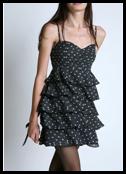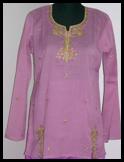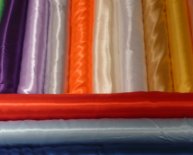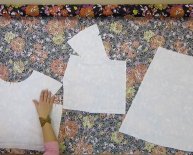
Polyester fabric characteristics
 When shopping for work clothes, consumers are presented with a wide range to choose from. The combination of fabrics, styles, and different manufacturers can make the choice a daunting one. Two of the more popular fabrics for work clothes are 100% cotton and a poly-cotton blend. But which is the best choice? In short, that depends on what the buyer is looking for.
When shopping for work clothes, consumers are presented with a wide range to choose from. The combination of fabrics, styles, and different manufacturers can make the choice a daunting one. Two of the more popular fabrics for work clothes are 100% cotton and a poly-cotton blend. But which is the best choice? In short, that depends on what the buyer is looking for.
So, what are the differences between 100% cotton and poly-cotton blend fabrics? To start with, a poly-cotton blend is just what its name suggests: a fabric that is made up of cotton and polyester fibers. The ratio varies, with 65% cotton and 35% polyester being the most common. 50/50 blends are also easily found. The blend is designed to afford the advantages of both the cotton and polyester fibers into one fabric.
What are the advantages and disadvantages of cotton? 100% cotton is a fully breathable fabric, which means that it can be cooler to wear in hot conditions. However, as the thickness increases, the breathability decreases. 100% cotton tends to rip and wear out easily, depending on the weave. Cotton canvas is a very durable and abrasion-resistant fabric, but it is very thick and heavy. In regards to safety, cotton fibers that have not been treated for fire-resistance will tend to burn away where polyester will melt. As a natural fiber, 100% cotton garments also tend to be a bit more expensive than the synthetic counterparts.
Polyester has an equal number of advantages and disadvantages as cotton. Polyester does not breathe and has a tendency to stick to the skin once perspiration begins. In regard to durability, polyester is a more elastic fiber and therefore tends to be tear resistant. However, it does not tend to be as abrasion-resistant as cotton canvas. As polyester is not dependent upon the forces of nature for a successful harvest, it is usually considerably cheaper than 100% cotton.
 A fabric made from a poly cotton blend combines the strengths of the two fibers are breathable, tear-resistant, and can be fashioned into abrasion-resistant fabrics, like canvas. While not as inexpensive as pure polyester, poly cotton blends do tend to cost less than comparable garments made of 100% cotton and they provide much more comfort. The previously mentioned 65/35 blend of cotton and polyester is the most popular for work garments, particularly because of price, durability and a larger color selection being available for purchase. When shopping for work garments, the choice between 100% cotton and poly cotton blends depends largely on the work environment and personal preference. If employees work indoors around machinery, the tear-resistance of poly cotton may be favorable. If the work is in an outdoor setting, particularly in hot climates, 100% cotton fabric could be the better choice. Before deciding, make sure to take all environmental factors into consideration.
A fabric made from a poly cotton blend combines the strengths of the two fibers are breathable, tear-resistant, and can be fashioned into abrasion-resistant fabrics, like canvas. While not as inexpensive as pure polyester, poly cotton blends do tend to cost less than comparable garments made of 100% cotton and they provide much more comfort. The previously mentioned 65/35 blend of cotton and polyester is the most popular for work garments, particularly because of price, durability and a larger color selection being available for purchase. When shopping for work garments, the choice between 100% cotton and poly cotton blends depends largely on the work environment and personal preference. If employees work indoors around machinery, the tear-resistance of poly cotton may be favorable. If the work is in an outdoor setting, particularly in hot climates, 100% cotton fabric could be the better choice. Before deciding, make sure to take all environmental factors into consideration.
It is the intention of this article to help shed some light on the different types of fabric characteristics of 100% cotton and poly cotton fabric. We are hoping to share our thoughts with you in order for you to make a more informed decision when choosing the fabric type for your garments.

















